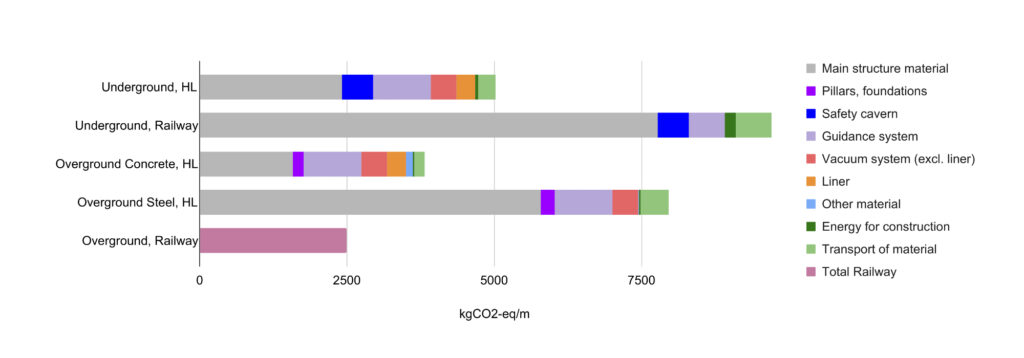In collaboration with the Swiss Federal Office of Transport (BAV), Eurotube, alongside partners PSI and HES-SO, has conducted a study to estimate the financial, environmental, and energy Key Performance Indicators (KPIs) of a hyperloop system, while simultaneously creating a comprehensive framework to identify sensitivities and guide future research.
EuroTube’s research included for the first time a Life Cycle Assessment (LCA) of tunneling and detailed modeling of tunneling costs. This holistic approach acknowledges the likelihood of substantial hyperloop development taking place underground due to constraints in densely populated regions.
The study centered around a hypothetical Swiss system, focusing on a Zurich to Geneva East-West line. While not entirely generalizable to all routes, the findings provide an order of magnitude for hyperloop systems as a whole.
Cost-Efficiency: Calculations from the study indicate a potential cost as low as 0.17 CHF per passenger-kilometer (pkm) for the proposed network, with approximately 60% of this cost attributed to operational expenditures. This result suggests that hyperloop can be a financially viable and competitive mode of transportation.
Sustainable Energy Consumption: In terms of energy consumption, the hyperloop system could achieve as little as 8.5 gCO2 per pkm, even when factoring in infrastructure costs. This emphasizes the sustainability of the proposed system and its potential to contribute to a greener future.
Societal Benefits Beyond Numbers: Considering socio-economic benefits, the study highlights factors such as reduced travel time and noise reduction, potentially leading to societal savings exceeding 500 million CHF annually in Switzerland.
Future Research Focus: The study recommends directing future research efforts towards thermal management, overall aerodynamics, reduction of tunneling costs, and the design of a vacuum-proof tunnel. These focal points aim to address key challenges and further enhance the feasibility and sustainability of hyperloop technology.
Julian Ehwald, lead of EuroTube’s research team, states, “Apart from providing estimates that encourage continuation of the efforts directed at developing hyperloop as a mode of transport, the tool developed in this study allows us to provide guidance in where to focus the research to have the most impact. With these results on the table, it is time to see whether the assumptions become reality. We look forward to experimental campaigns starting soon in the facilities under construction like DemoTube or the European Hyperloop Centre.”
The final project report is available for download through the website of the BAV. (Link)

* GWP per meter and direction of infrastructure for a lifetime of 100 years. This does not include stations, launching devices or vehicles. Railway value for overground is taken from ecoinvent. Steel values are scaled up and based on a prototype design elevated on concrete pillars.
